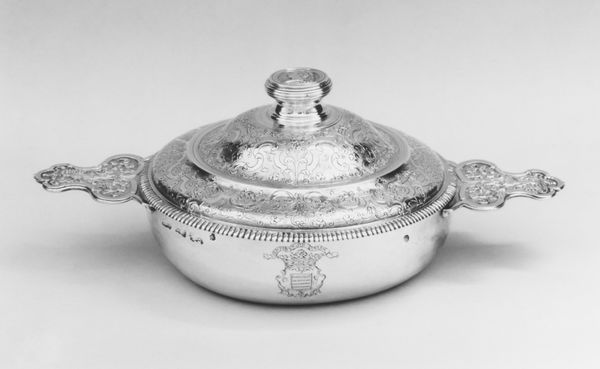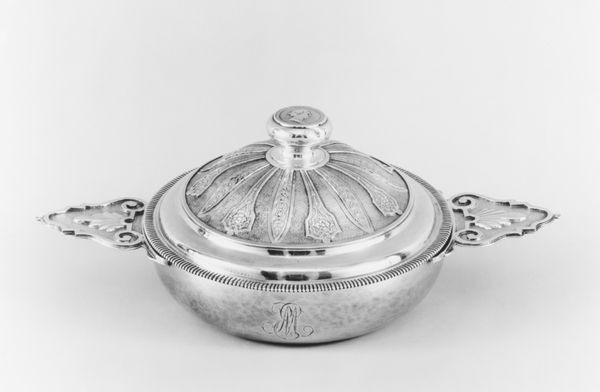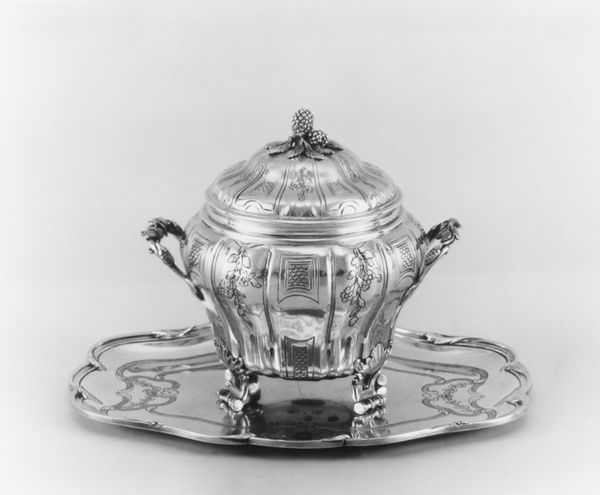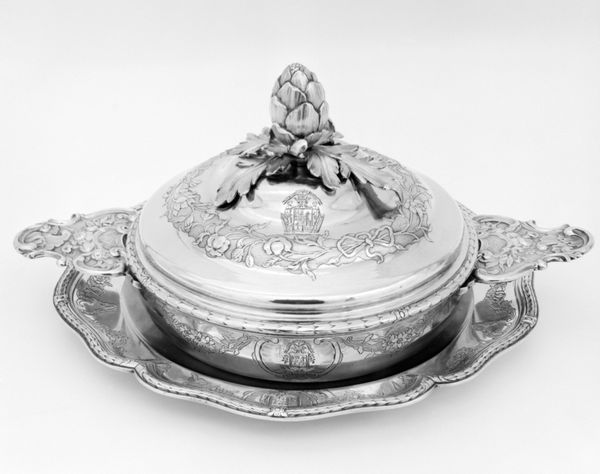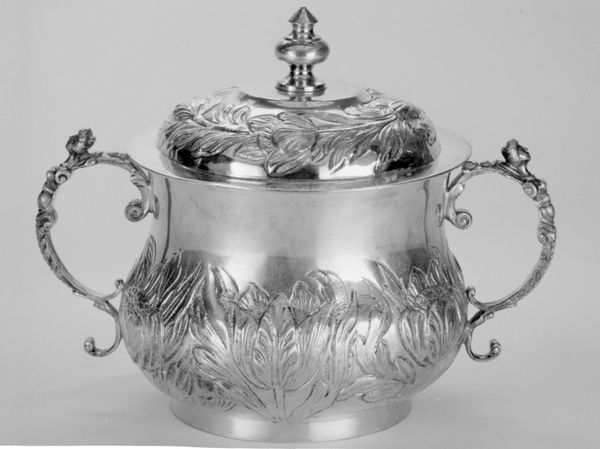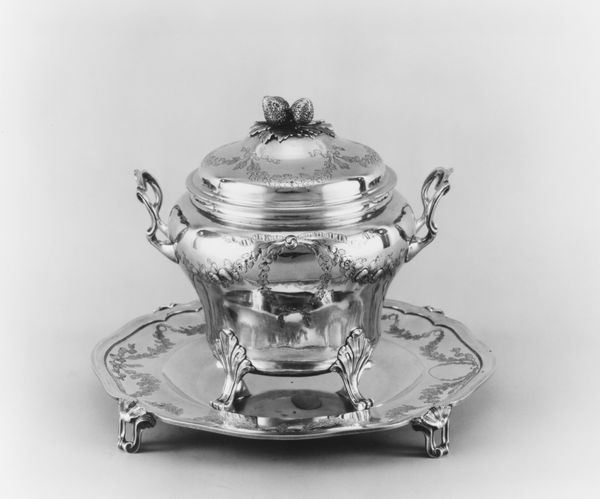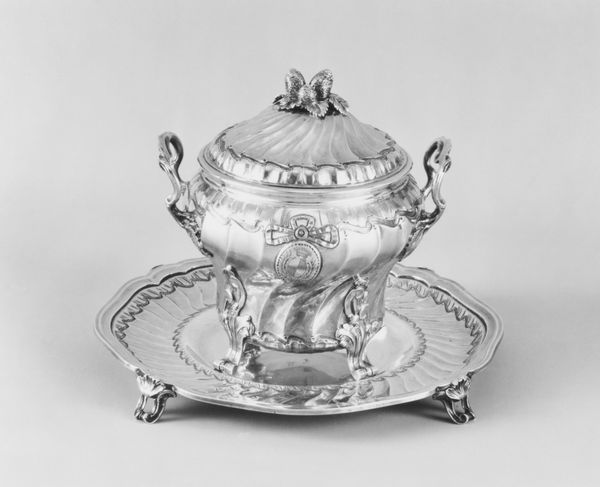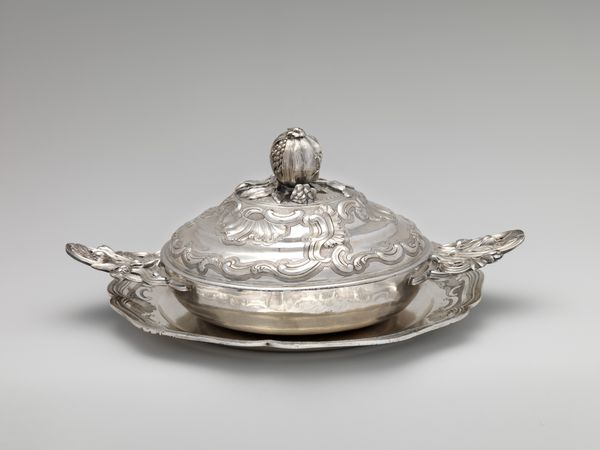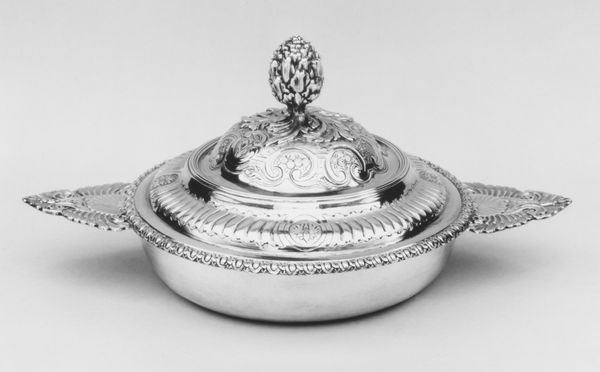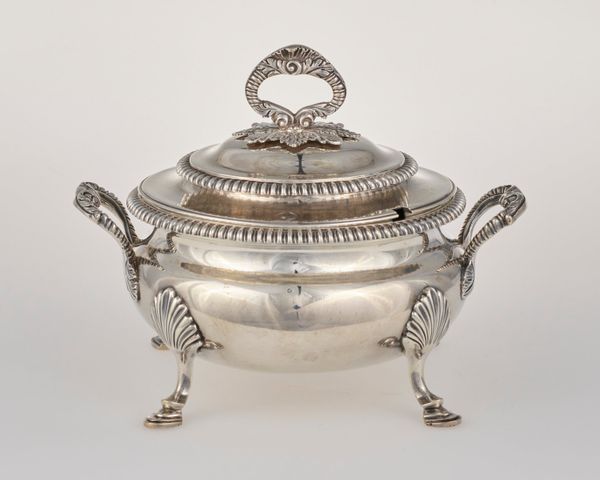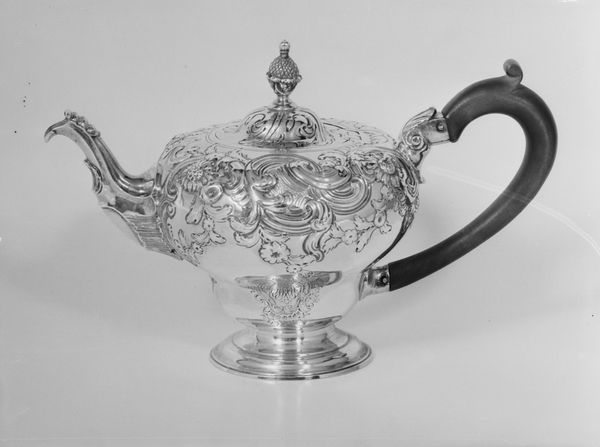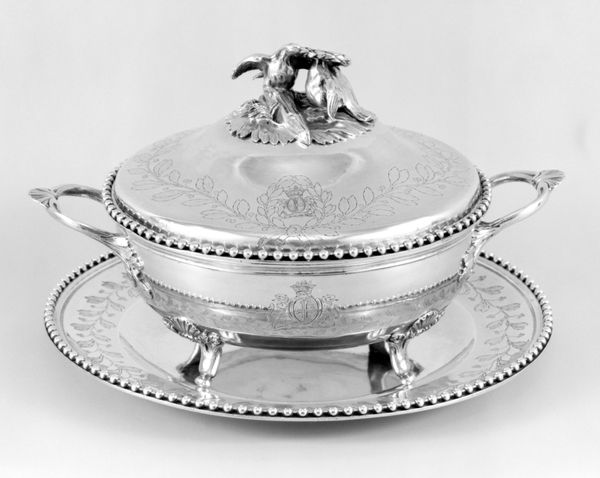
silver, sculpture
#
silver
#
sculpture
#
decorative-art
#
rococo
Dimensions: Overall: 5 × 7 × 12 in. (12.7 × 17.8 × 30.5 cm)
Copyright: Public Domain
This covered porringer, or écuelle, was crafted in France by Philippe Lafourge, an artist active during the late 17th and early 18th centuries. At the time, France was under the reign of Louis XIV, a period defined by elaborate court life, colonial expansion, and the establishment of France as a dominant cultural force in Europe. The porringer reflects the wealth and elaborate dining rituals among the aristocracy. Vessels like this one were associated with the intimate act of dining, often used for consuming broth or other liquids, especially for women after childbirth and those of delicate health. Made of silver, a precious metal, the porringer’s intricate detailing speaks to a culture of conspicuous consumption and social display. The delicate floral patterns and the sculpted pinecone finial suggest a reverence for nature, which was often interlaced with displays of power. Consider that objects such as this also played a role in defining and reinforcing gendered identities. While the porringer might seem like a mere vessel, it tells a larger story of cultural values and social hierarchies.
Comments
No comments
Be the first to comment and join the conversation on the ultimate creative platform.
